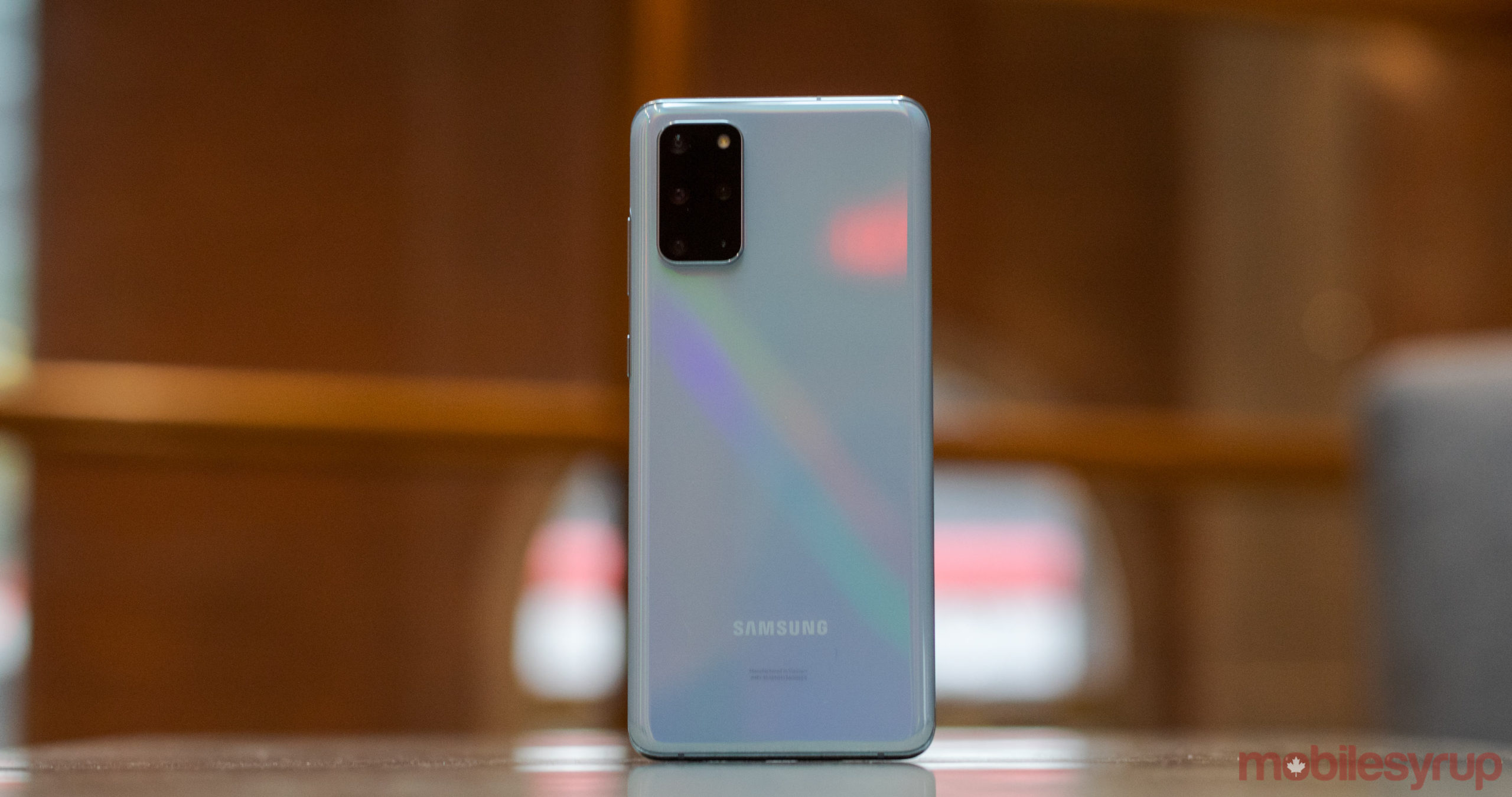
The Pros
- 120Hz display
- Quick and powerful
- Reliable battery
The Cons
- Quite expensive
- Camera not the best on the market
- Removed headphone jack
From being an HTC fanboy to an Android purist, I never thought there’d be a day when I’d be reviewing a Samsung flagship smartphone and loving every moment with the device.
Last year, Samsung’s S10+ was my favourite phone, but I still had some hangups about it because it wasn’t perfect. Though it’s still quite early in 2020, the S20+ will almost certainly be near the top of my list again, and while this phone isn’t perfect, either, it’s pretty close.
In my book, Samsung’s S20+ is a AAA-tier premium smartphone and the one to beat. While the S20 Ultra is Samsung’s top-end S20 series device, the S20+ is the phone for everyone and anyone who’s into premium handsets.
2020 should be an exciting year for phones, with foldables, rumours of slider handsets and companies trying to outdo one another with various gimmicks. The S20+ is the phone for those who aren’t interested in the extra shticks, but just simply want a premium device and don’t mind an outrageous price tag.
If you’re looking for the Galaxy S20 review, you can find it here. Or, if you’re looking for the S20 Ultra review, you can find it here.
Elegance and class

Samsung’s Galaxy S20+ is not, by any means, a small phone. Measuring in at 161.9 x 73.7 x 7.8 mm, it’s far from the biggest premium device on-the-market, but a 6.7-inch screen puts it amongst the largest displays featured in a phone available in Canada. Handsets like the Samsung Galaxy Note 10+, iPhone 11 Pro Max, and even the Pixel 4 XL are all bigger than it in some way or another, and those last two phones have smaller displays than the S20+. Samsung squeezes a big screen on the device by giving the S20+ a 20:9 aspect ratio and reducing the phone’s thickness.
The 20:9 aspect ratio means that the handset is taller than most other devices on the market, but its width is smaller, and I prefer this. Similar to the move from 16:9 to 18:9 and 19:10, the 20:9 aspect ratio makes it easier to use with one hand.
Other than the aspect ratio, the S20+ differs from its predecessor in a few notable ways.
Samsung finally got rid of the headphone jack for the first time with its S series lineup. I don’t mind this design element change, as I often use Bluetooth headphones and the S20+ comes with USB-C wired earbuds, but I can see this being annoying for audiophiles.
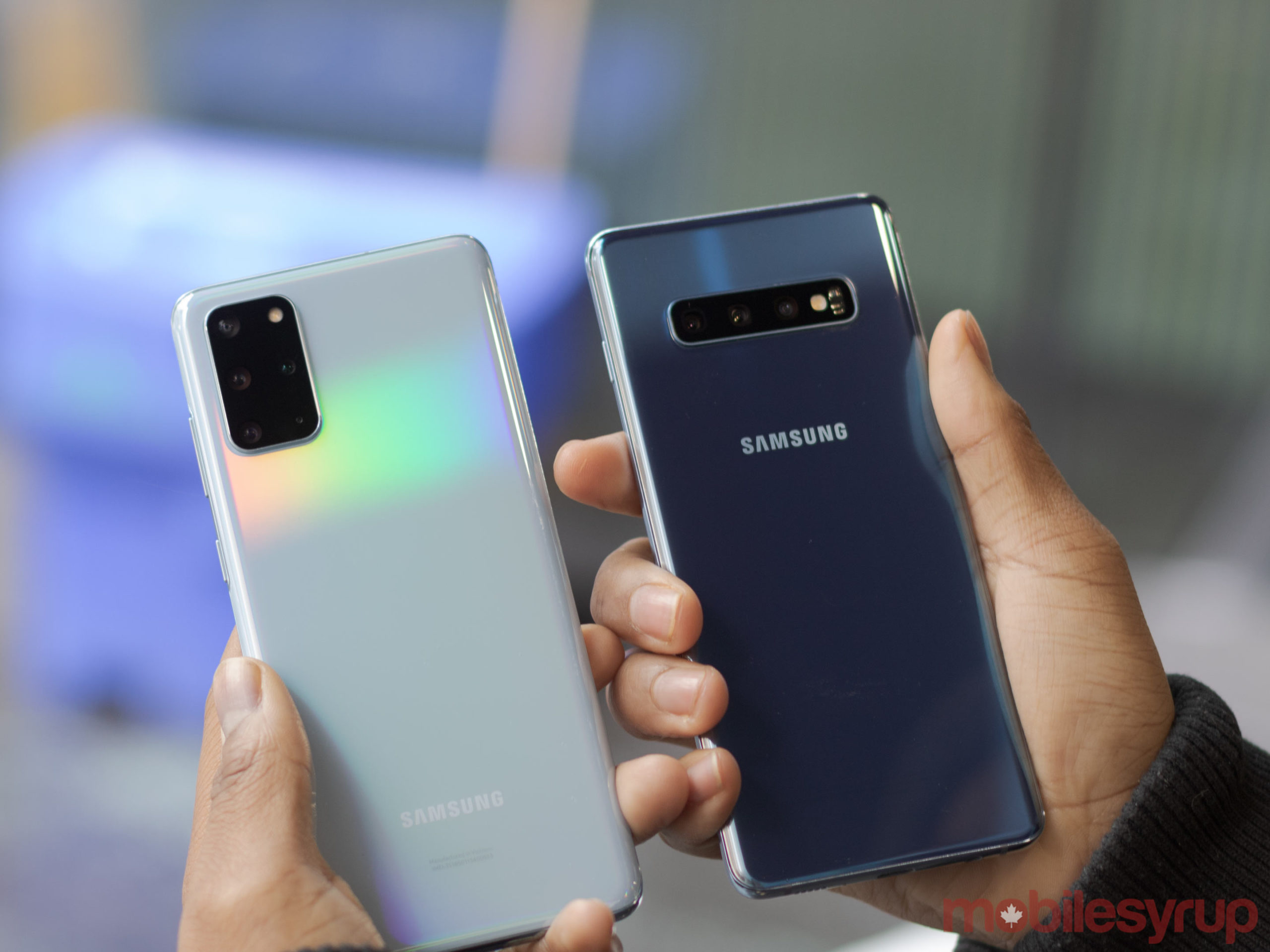
On top of that, Samsung ditched dual front-facing shooters for a single camera and moved the placement to the top-middle, similar to the Galaxy Note 10 series.
Flipping it to the back reveals the S20+’s weird rounded rectangular camera setup. While I prefer the S10+’s linear shooter arrangement and placement, I don’t hate the S20+’s. The camera bump isn’t that bad, and I get that with the four shooters, the microphone and the dual LEDs, it would be challenging to give it the S10’s setup. Unfortunately, it does seem like the South Korean company is copying the likes of Google and Apple in terms of camera layout.
The camera bump on the S20+, however, is nowhere near as grotesque as the S20 Ultra’s, which probably has the ugliest camera setup I’ve seen yet on a smartphone.
That smooth 120Hz screen display
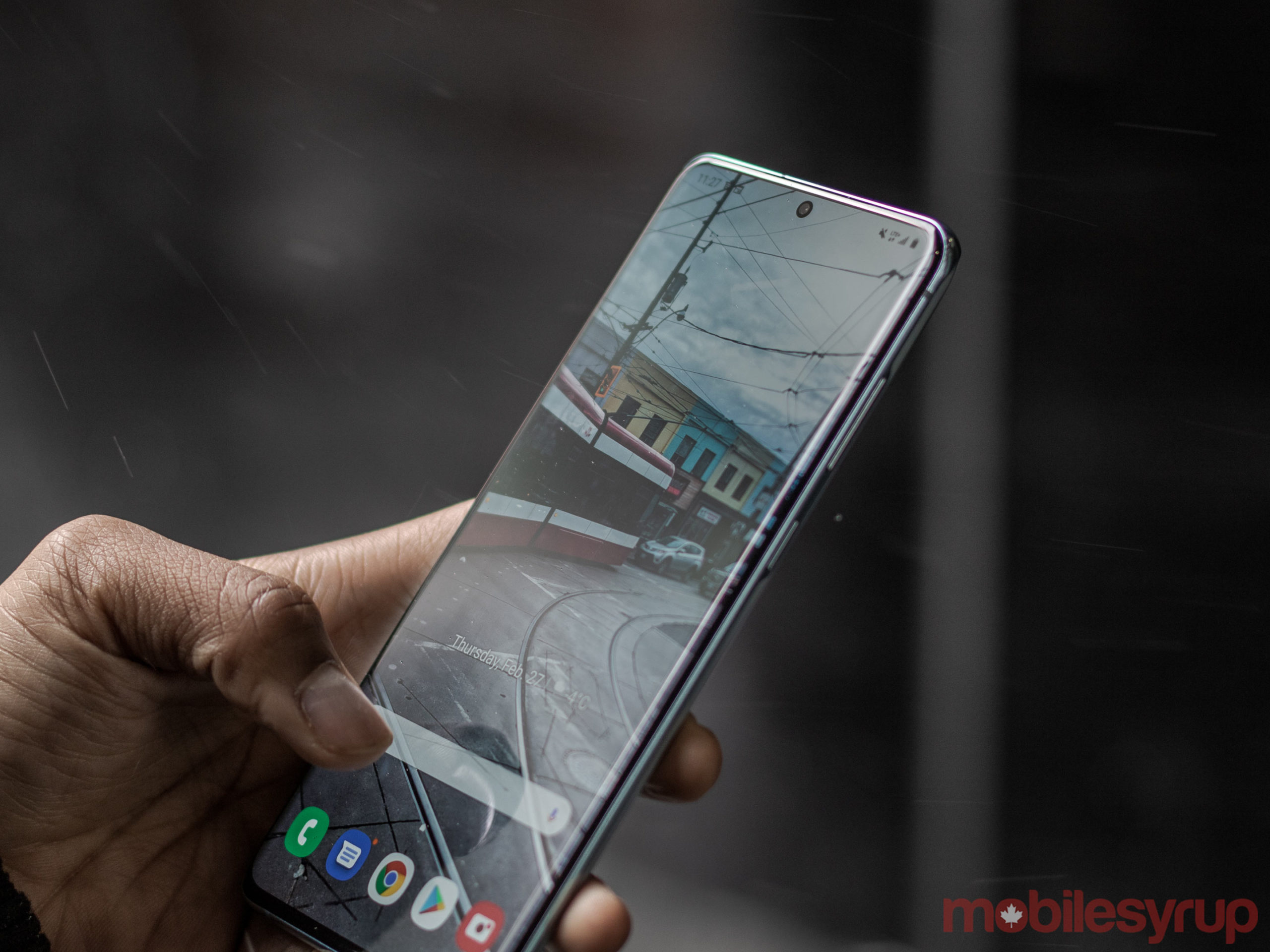
The Galaxy S20+’s screen is phenomenal, but it comes with a downside. The S20’s 120Hz refresh rate only works with the FHD+ pixel resolution, and honestly, that’s okay because the 120Hz refresh rate is worth it.
A higher refresh rate results in smoother animations, and while that doesn’t seem necessary, it helps the device feel like it’s running better and quicker. Samsung also added a 120Hz touch sample rate on the S20 series.
Touch-sensing refers to the frequency at which a phone tracks the movement of your finger. Typical smartphones have a 60Hz touch sample rate, which tracks the screen every 16.6ms, while this handset has a 120Hz touch sample rate that cuts the time by half.
Furthermore, the S20+ scales up to a 240Hz touch sample rate when gaming, cutting the time down by even more.
The display is, as you’d imagine, spectacular. This is especially the case with WQHD+ resolution enabled, which offers more detail as well as a vibrant and wider range of colours in images and videos.
While it would have been preferable to have the 120Hz refresh rate with the WQHD+ screen, having it with the FHD+ instead helps the handset’s battery and, ultimately, gives users choices. FHD+ with 120Hz offers smooth transitions and animations, WQHD+ provides the best picture possible and FHD+ by itself serves up decent quality that’ll net you more battery life.

And speaking of battery life, the S20+ sports a 4,500mAh power cell.
Typically, with the S20+, I never had to worry about the battery. Most days, I had the 120Hz refresh rate on, and I could achieve more than six hours of screen on time. One day, I fooled around with FHD+ mode without the 120Hz refresh rate and then switched to WQHD+ halfway through the day and achieved five hours of screen on time. Another day, when I kept WQHD+ for most of the day and switched to the 120Hz refresh rate halfway through, I only attained four hours of screen on time.
However, it’s crucial that I mention that while screen resolution and refresh rate matter, battery life also depends on what you’re doing on your device. Most days, I spend anywhere from 30 minutes to two hours on YouTube, up to an hour of Netflix, up to 20 minutes of playing the mobile game Spellslingers, and a lot of wasted time texting and using Instagram.
To sum it all up, the S20+ battery is reliable.
Best ‘Night’ mode
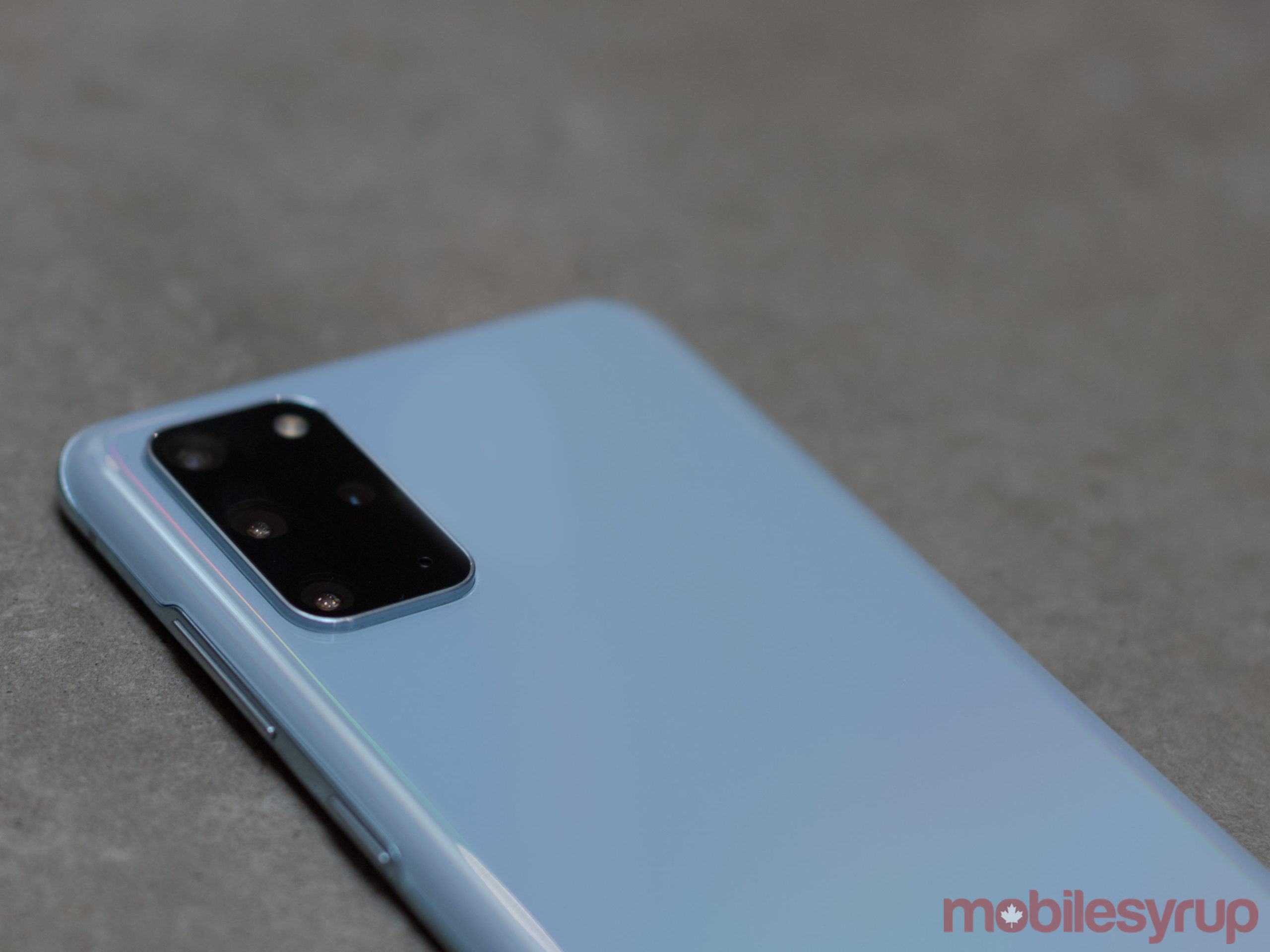
With the Samsung Galaxy S20+, I was very interested in ‘Night mode’ and the selfie camera.
Selfie-wise, I typically prefer Google and Apple’s front-facing shooters, and Huawei and Google’s low-light camera modes are also favourable over previous Samsung devices.
However, with the S20+, things slightly change for the better for Samsung.
Starting with the phone’s low light performance, I was quite impressed by the S20+’ Night mode. From someone who owned the Pixel 3 XL and reviewed the Pixel 4 XL, as well as the Huawei P30 Pro and the P20 Pro, I think the S20+ can stand up against these hard hitters.
This slideshow requires JavaScript.
Samsung’s Night mode pictures aren’t as sharp as Huawei’s, and some details are lost, but for the most part, these images are superb. Similar to Huawei’s low-light mode, Samsung’s S20+ requires users to hold their phone very still while taking shots, and if your hands shake, it can result in a somewhat blurry picture.
It’s important to note that you don’t even always need to use the S20+’s Night mode. Due to the phone’s low aperture, the handset naturally lets in a lot of light and can illuminate a picture without needing to switch camera modes.
As for the selfie camera, Samsung phone selfie shooters have always been a point of contention for me. As a black man, these cameras are, to put it simply, not made for me. Created by the South Korean company, the cameras are designed with people who have lighter skin in mind. Because of this, I notice the slight overexposing that occurs when you take selfies. The S20’s selfie camera is the best it’s ever been on a Samsung smartphone and takes better selfies than Huawei and LG handsets. That said, I still prefer Google and Apple’s flagship phones for selfies. This experience is slightly better on the S20 Ultra, however.
This slideshow requires JavaScript.
For those wondering about skin smoothing, the S20+ does it a bit, but it’s not too bad. Annoyingly, this feature is on by default but you can attempt to lower it by messing with the settings. However, there’s always some level of smoothing.
In normal lighting, pictures are clear, crisp and offer a great range of colour, but are a tad oversaturrated for my taste. While I have a few photos below showing off the phone’s camera prowess, Jon’s review of the S20 goes a bit deeper — check it out here.
The S20 features a 64-megapixel camera that users have to turn on to use; otherwise, the phone utilizes pixel binning. In this case, pixels merge to become one and results in a 12.2-megapixel telephoto shot. Turning off pixel binning creates a 64-megapixel shot that comes in at a 6936 x 9248 pixel resolution, which is great if you’re going to blow up the picture for a photo book or crop an image significantly. Otherwise, you won’t notice the difference in resolution.
In short, whether you’re taking a Night mode picture, a selfie shot, or just a regular snap of your friends, family or a cool building, the S20+ does the job well. It’s not the best on the market — I’d personally take my Pixel 4 XL camera over the S20+s — but most people will be more than satisfied with the feature.
Zoom or not to zoom
This slideshow requires JavaScript.
Samsung’s Galaxy S20+ has 3x optical zoom and 30x digital zoom, so if you’re in the market for a phone that can take excellent pictures from far away, this isn’t the handset for you.
The S20 beating the Pixel 3’s 3x optical zoom is debatable, but it’s clearly not as good as Huawei’s P30 Pro’s 5x optical and 10x hybrid and the Galaxy Ultra’s 4x optical and 10x hybrid take telephoto pictures a lot better.
Everyday living
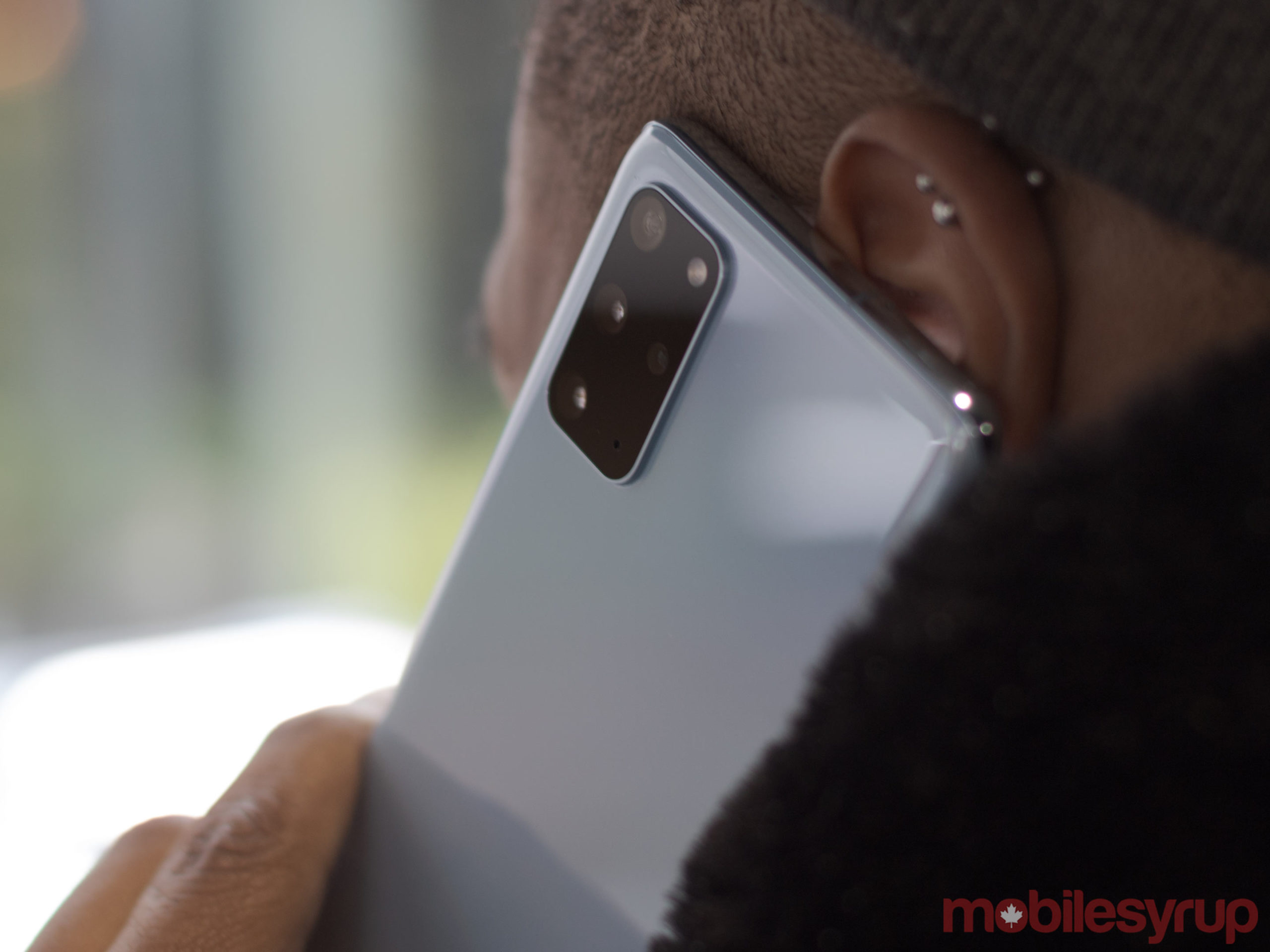
Everyday use with the S20+ is superb.
The S20+’s 12GB of RAM can handle more than 15 apps open at once, and with the Snapdragon 865 processor, everything runs at a quick and speedy pace. While I’ve had the phone, I have yet to experience any slowdown. Switching from app to app, to having YouTube play in the background, as well as scrolling through Chrome with the 120Hz screen and having plenty of apps opened, there hasn’t been one hiccup.
One UI 2.0 also offers smooth animations and features tons of useful functionalities. I’ve written before about my love of the original One UI, and that sentiment hasn’t changed with the second iteration. I have zero complaints about either One UI or the S20+’s performance.
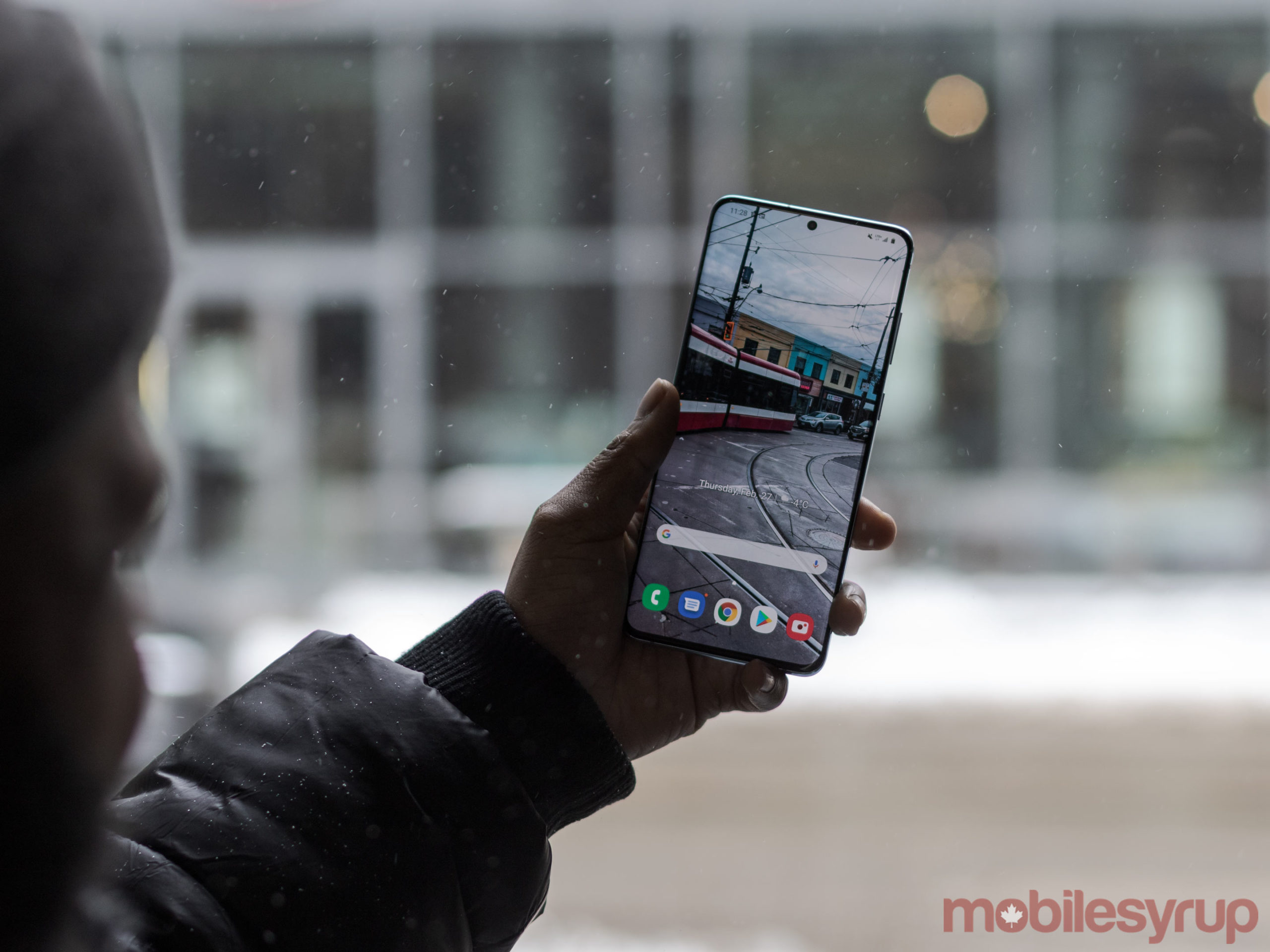
One of the biggest reasons for customers to buy the S20+ is that it’s 5G-ready — or so you’d think. Rogers went live with its 5G network on March 6th alongside the S20 series’ release. However, the network is limited to downtown Vancouver, Toronto, Ottawa and Montreal. Further, I wasn’t able to test this network, so I can’t speak to the benefits it offers.
Furthermore, there will be tons of premium 5G-ready flagships that’ll come out this year, such as Huawei’s P40 Pro and LG’s V60 ThinQ. And the service only works in very limited areas, so if you’re buying the S20+ only for its 5G capabilities — don’t.
All in all, Samsung's S20+ is top tier
Like Goldilocks and the three bears, the S20 is too small, the S20 Ultra is too ugly, big and expensive, and the S20+ is just right. Off contract, the S20+ is $1,579.99 CAD, which makes it $270 cheaper than the Ultra, and $260 more expensive than the S20. On contract, the S20+’ price is a lot easier to swallow.
While I can't in good conscience say that any smartphone is worth that price, if there were one that was, it'd be the S20+.
Samsung's Galaxy S20+ is the gold standard for phones in 2020. It features a great design, an excellent display, a powerful processor, a reliable battery, and solid camera performance. It's hard not to recommend the handset.
For the rest of the year, I'll be comparing other premium phones to this device and see how they stack up. Good luck to them though, as the S20+ will be hard to beat.
Update 03/06/2020 at 9:43am ET: The article has been updated to better reflect the current state of 5G in Canada following Rogers' limited launch of 5G.
"Samsung's Galaxy S20+ is the gold standard for phones in 2020"
MobileSyrup may earn a commission from purchases made via our links, which helps fund the journalism we provide free on our website. These links do not influence our editorial content. Support us here.





